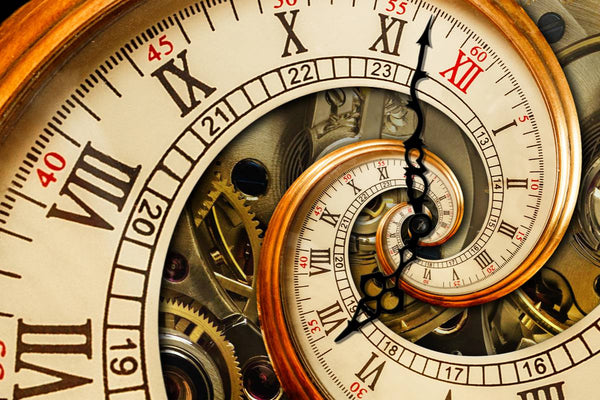Pocket watches have long been an essential tool for sailors
Especially in ancient times when modern technology did not yet exist, the navy faced a major challenge: how to navigate the seas without access to an accurate chronometer to measure the time and the ship's exact position?
This is where the pocket watch came in. Sailors began using this portable clock to accurately measure time. The pocket watch was often worn around the neck, in a pocket, or in a specially designed jacket.
In the days of pirates, navigating the sea was a risky business, where life and death depended on many factors, including the ship's exact position and the time elapsed since the last landmark. For pirates, therefore, possession of a pocket watch was a valuable asset for successful navigation and attacking enemy ships.
Pocket watches were used to measure sailing time and calculate ship speed. This allowed pirates to track their position on the map and adjust their course accordingly. Pocket watches were also used to synchronize shipboard clocks, which was important for coordinating crew activities and avoiding navigational errors.
When pirates captured an enemy ship, pocket watches were also considered valuable loot. The watches were often worn by officers and wealthy merchants and were often engraved with status symbols or family seals. Pirates seized these watches for their material and symbolic value, and to demonstrate their dominance over defeated enemies.
Pocket watches were also popular among pirates for their elegant aesthetic.
The watches often featured a gold or silver case adorned with decorative engravings and patterns, as well as a clear, easy-to-read dial. Pirates liked to show off their wealth and good taste by wearing luxurious and elegant pocket watches.
But pocket watches weren't just a fashion accessory for pirates. They were also essential survival tools. Pirates spent long periods at sea, far from any landmarks or civilization. Pocket watches were therefore essential for measuring elapsed time and avoiding getting lost at sea.
Pocket watches also played an important role in the daily lives of pirates. Watches were often used to regulate tide times, plan nighttime attacks, and measure the duration of crew watch shifts.
Pocket watches were often passed down from generation to generation among pirates. The watches were considered a valuable heirloom, passed down from father to son or given as a farewell gift to a friend or fellow pirate. The watches were often engraved with names, dates, and personal messages, making them items of great sentimental value to pirates.
Pocket watches have also played an important role in the history of piracy. Some watches have been associated with famous figures in the history of piracy, such as Blackbeard, Calico Jack, and Anne Bonny. Watches were often worn by the wealthiest and most powerful pirates, making them symbols of their status and power.
Over time
Naval pocket watches often had special features, such as highly legible dials, phosphorescent hands for easy reading in the dark, waterproof cases to withstand ocean spray, and hand-winding for maximum reliability.
Additionally, pocket watches were often calibrated for specific naval needs, such as measuring sailing time, calculating ship speed, and synchronizing onboard guns.
Today, pocket watches have lost much of their practical use on modern ships, but their elegant style and fascinating history continue to make them very popular with watch enthusiasts. Pocket watches are often worn at formal events, weddings, or historical reenactments to add a touch of class and sophistication to the outfit.
Whether you're a modern sailor or a history buff, naval pocket watches are highly prized collector's items for their precision, robustness, and elegant aesthetic. So why not add a pocket watch to your watch collection?

